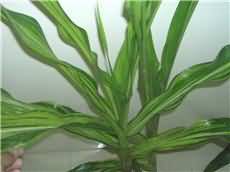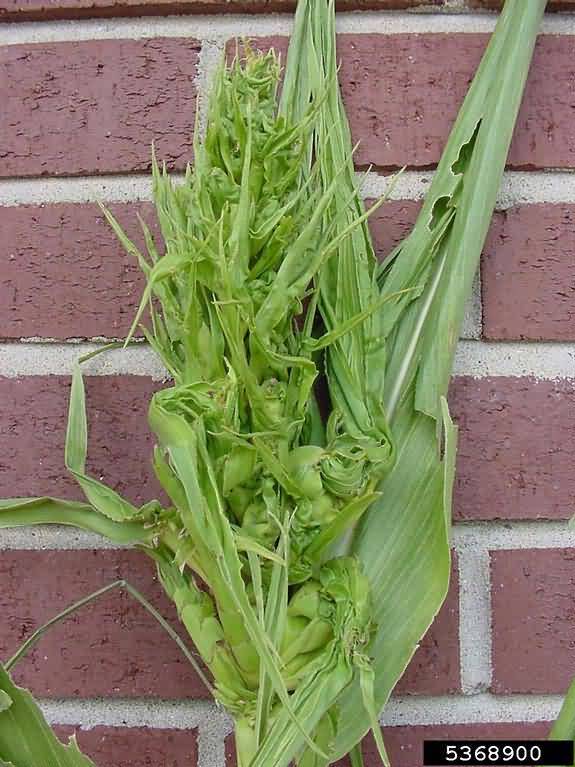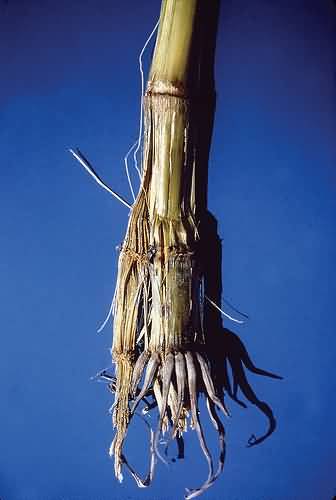मक्का के 5 प्रमुख रोग और उनका प्रबंधन
Maize (Zea mays L. ssp. mays) known in many countries as corn or mielie/mealie, is a grain domesticated by indigenous peoples in Mesoamerica in prehistoric time The leafy stalk produces ears which contain seeds called kernels. Though technically a grain, maize kernels are used in cooking as a vegetable or starch. In India, maize is grown in a wide range of environments, extending from extreme semi-arid to sub-humid and humid regions. The crop is also very popular in the low- and mid-hill areas of the western and northeastern regions. Broadly, maize cultivation can be classified into two production environments: (1) traditional maize growing areas, including Bihar, Madhya Pradesh, Rajasthan, and Uttar Pradesh (BIMARU), and (2) non-traditional maize areas, including Karnataka and Andhra Pradesh (KAP). In traditional areas, the crop is often grown in marginal eco-regions, primarily as a subsistence crop to meet food needs. In contrast, maize in the non-traditional areas is grown for commercial purposes-i.e., mainly to meet the feed requirements of the booming poultry sector. The main objective of this article to provide best knowledge of maize disease and management so that maize production in India should be improved.
1. Bacterial Stalk Rot:
Causal organism: Erwinia carotovora, Erwinia chrysanthemi
Symptoms
- The basal internodes develop soft rot and give a water soaked appearance. A mild sweet fermenting odour accompanies such rotting.
- Leaves some time show signs of wilting or water loss and affected plants within a few days of infection lodge or topple down.
- Ears and shank may also show rot. They fail to develop further and the ears hang down simply from the plant
Control measures
- Use of disease resistance varieties, i.e. Hybrids Ganga Safed-2, DHM 103, show significantly less disease incidence than other hybrids.
- Avoid waterlogging and poor drainage.
2. Black Bundle Disease and Late Wilt:
Causal organism: Cephalosporium maydis, Caphalosporium acremonium
Symptoms
- The disease kills the plant prematurely after flowering. Infected plants do not show symptoms until they reach to tasseling.
- Wilting generally starts from the top leaves, Leaves become dull green, eventually loose colour and become dry.
- In advance stages the stalk loses its healthy green colour, lower portions become dry,shrunken with or without wrinklings, hardens and turn purple to dark brown which in more prominent on lower internodes.
- When split open diseased stalks, show brown vascular bundles starting in the underground portion of the roots.
- Diseased plants produce only ears with undeveloped shrunken kernels.
- In severe cases affected plants remain abortive causing 100 per cent loss.
- Cephalosporium maydis is primarily soil borne and may infect young maize plants more readily than other plants through roots or mesocotyl. In case of C. acremonium only vascular burdles get blackened.
Control measures
- Use of resistant varieties like Ganga Safed 2.
- Crop sanitation, crop rotations.
- Avoiding water stress at flowering.
- Seed treatment with Thiram or Captan 3g/kg seed.
3. Charcoal-Rot:
Causal organism: Macrophamina phaseolina
Symptoms
- The characteristic symptoms of the disease become apparent as the plants approach maturity. The disease generally appears early after flowering.
- Plants affected by M. phaseolina show evidence of pre-mature ripening. The out sides of lower internodes become straw coloured. The pith becomes badly disintegrated.
- The infected stalks may split longitudinally into a mass of fibres.
- A distinguishing character of the disease is the presence of the small black sclerotia in the pith of the affected stalks. Roots are also invaded and show black sclerotia in the disorganised tissue.
Control measures
- Regular irrigations particularly during flowering time should be provided.
- Use resistant varieties like DHM 103, Ganga Safed - 2 and avoid sowing of suceptable varieties like DHM 105.
- Seed treatment with Carbendazim or Thiram 3g/kg seed is effective.
- Field sanitation, crop rotation should be followed.
4. Common Rust:
Causal organism: Puccinia sorghi
Symptoms:
- Circular to elongate golden brown or cinnamon brown, powdery, erumpent pustules appear on both leaf surfaces
- As the crop matures brownish black pustules containing dark thick walled two celled teliospores develop. In severe cases infection spreads to sheaths and other plant parts.
Control measures
- Plant hybrids like Deccan, Ganga-5, Deccan Hybrid Makka-103 and DHM - 1 which are resistant to this disease to minimise the disease intensity.
- Spray Mancozeb 2.5g/lit or Dithane M-45 spray can be taken (0.4%) as soon as first symptoms are observed and it can be repeated at 10 days interval till flowering.
5. Downy Mildews
a) Sorghum downy mildew:
Causal organism: Perenosclerospora sorghi.
Symptoms
- Early maize crops escape infection because by the time conidia are produced they develop resistance on the collateral host susceptibility occurs only upto about 15 days of age.
- In susceptible seedling plants, less than 4 weeks after seedling infection becomes systemic in all growth, subsequent to downward growth of mycelium and colonization of shoot apex (growing point). All Peronosclerospora spp. induce both local and systemic infection.
- Malformation of tassels in infected plants.
- Chlorosis, white stripes, stunting with downy fungal growth on both leaf surfaces are the characteristic symptoms.
b) Brown stripe Downy mildew:
Causal organism: Sclerophthora rayssiae.
Symptoms
- Disease symptoms have been observed only on leaves. They are vein limited.
- Wilting generally starts from the top leaves; Leaves become dull green, eventually loose colour and become dry.
- Chlorotic stripes, 3-7 mm wide will develop and they further extend in parallel fashion and may in severe cases cover the entire leaf lamina.
- Severe infection also incites blotching. The stripes in advanced stage become necrotic with purple or reddish colour and present a burnt appearance.
c) Crazy top downy mildew:
Causal organism: Sclerophthora macrospora


Symptoms
- Disease symptoms first appear as rolling and twisting of upper leaves before mallformation of tassel.
- The important symptoms of the disease is the partial or complete malformation of the tassel which continues until the tassel resembles a maas of narrow, twisted, leafy structures.
- Affected plants show excessive tillering, stunted with chlorotic stripes on leaves.
d) Sugarcane downey mildew :
Causal organism: Peronosclerospora sacchari
Symptoms
- Downey growth is seen on the both leaf surfaces. Plants may be distorted with small, poorly filled ears with mis-shapen tassels
- Characterized by local lesions and systemic infection. Initial leasions are small, round, chlorotic spots on the leaves.
- Systemic symptoms appear as pale yellow to white stripes or streaks at the base of the 3rd to 6th oldest leaves.
- Several streaks may develop on leaf and may extend on the entire leaf.
Control Measures for Downy Mildew Diseases
- The eradication of collateral and wild hosts near maize field and rouging infected maize plants has been recommended.
- Destruction of plant debris by deep ploughing and other methods.
- Seed treatment with Metalaxyl at 4 g/kg and foliar spray of Mancozeb 2.5 g/l or Metalaxyl MZ at 2g/l is recommended.
- Use of resistant varieties like DMR 1, DMR 5 and Ganga 11.
Authors:
Sharad Shroff,
Banaras Hindu University Varanasi
E-mail:












